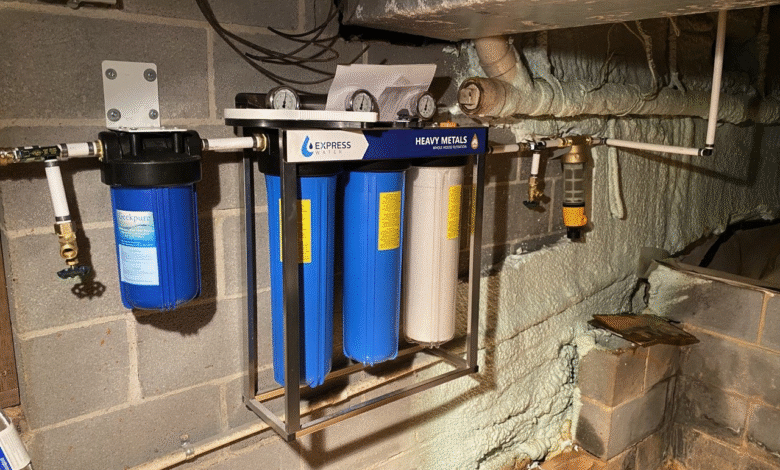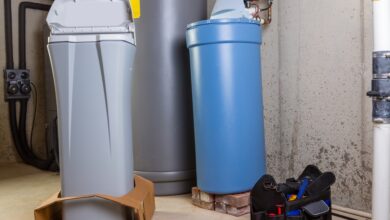Why Homeowners Are Opting for Water Filtration Systems

Key Takeaways
- In-home water filtration is becoming a preferred method to minimize health risks associated with tap water contaminants.
- Filtered water typically tastes better and smells fresher, which can promote higher water intake for families.
- The right filtration system may protect and prolong the lifespan of household appliances and plumbing.
- Proactive care and regular maintenance are crucial for maintaining system effectiveness and ensuring water purity.
- An understanding of available filtration options empowers consumers to make smart investments for long-term home wellness.
Rethinking Tap Water at Home
Having access to clean, safe drinking water is widely regarded as a basic necessity, and most people assume their tap delivers precisely that. Yet, growing awareness from national news coverage and agencies like the EPA underscores that water quality can fluctuate significantly depending on infrastructure, geography, and local environmental factors. In some regions, households may have tap water that falls well below ideal standards for purity, taste, or odor. This expanding attention to water quality is driving a powerful trend, with more families proactively seeking out water filter systems as an additional layer of protection and peace of mind for their homes.
Choosing a water filtration system can be a turning point for many households. Beyond removing visible particles, a well-chosen filter can address chemical and biological contaminants, such as chlorine or trace metals, that municipalities may miss or be unable to eliminate. When families commit to filtering their tap water, they’re often motivated by more than just health; they’re drawn to improved flavor, transparency, and the allure of making their kitchens and bathrooms sources of fresh, high-quality water. The result is not only a safer home environment, but also the confidence to fill glasses and pots straight from the tap, without worry.
What Drives Homeowners to Install Filtration Systems?
One of the main factors leading homeowners to invest in filtration is increasing access to information about pollutants that might slip through even advanced municipal treatment processes. Routine guidelines and news stories highlight potential risks from outdated lead pipes, sudden spikes in agricultural runoff, seasonal bacteria, and disinfection byproducts. According to consumer research, more than seven out of ten adults have at least some worry about the safety and quality of their water, particularly when it comes to contaminants that may not cause immediate symptoms but could have cumulative effects over time.
For many, adding a filtration system represents both a health safeguard and a practical lifestyle upgrade. Filtered water can remove the telltale tastes or odors caused by minerals or chlorine, which often lead families to spend extra money on bottled water. Not only does this shift eliminate plastic waste, but it also allows for better-tasting coffee, tea, and even homemade soups. Additionally, those who cook or have young children often appreciate having a reliable supply of pure water readily available at all times, making hydration and meal preparation more convenient than ever.
Types of Water Filtration Systems
- Activated Carbon Filters: These filters utilize a bed of activated carbon granules or blocks to absorb organic compounds and chemicals, such as chlorine, which are responsible for unpleasant tastes and odors. They’re especially common in faucet attachments, pitchers, and under-sink models designed for regular drinking water use.
- Reverse Osmosis Systems: Reverse osmosis is prized for its thorough purification process. Water is forced through a semipermeable membrane that removes up to 99% of dissolved salts, heavy metals, nitrates, and micro-pollutants. These systems are often combined with carbon or sediment pre-filters for comprehensive protection of the household.
- Whole-House Filtration: Installed at the point where water enters a home, these systems address issues such as sediment, iron, chlorine, and even bacteria before the water reaches any tap. Whole-house models can safeguard everything from showers and laundry to dishwashers and ice makers, providing broad, uninterrupted coverage.
- Point-of-Use Filters: Smaller filters, such as those found on refrigerators or single faucets, target areas where pure water is needed most, making them ideal for apartments, renters, or homeowners who want extra security in the kitchen or for their pets.
The growing array of options means there is a suitable solution for every household, whether the goal is to tackle region-specific contaminants or simply improve taste and clarity. It’s worth taking time to assess which system matches the property’s plumbing, water usage, and family needs.
Addressing Common Water Contaminants
Water can pick up unwanted substances as it travels from source to tap. While much of this is filtered out at treatment plants, some traces inevitably make their way into home systems. The Centers for Disease Control and Prevention highlights contaminants such as lead, chlorine, herbicides, pesticides, and bacteria like E. coli among the most common concerns. The actual profile of contaminants can depend on local industries, weather events, and even disruptions in city-wide pipe repairs or upgrades.
The most effective defense is a personal water test, which identifies specific risks, including lead, excess minerals, and microbial pollutants. This knowledge helps homeowners choose the right system—activated carbon for improving taste, reverse osmosis for tackling heavy metals, or UV filters for microbial safety. In some homes, multi-stage systems are recommended, which involve stacking several types of filters to provide comprehensive coverage against a broad spectrum of contaminants, offering additional peace of mind for families with small children, the elderly, or those with health sensitivities.
Maintaining Your Filtration System
A filtration system’s reliability hinges on how well it is maintained. Regular filter changes are crucial to prevent contaminants from accumulating and maintain optimal performance. Most residential systems require a filter replacement every three to six months, although this interval can vary depending on water quality, household size, and system design. Many new systems come with digital reminders or indicator lights, but setting a calendar reminder works just as well for manual models.
- Always track filter replacement dates for both warranty compliance and performance tracking.
- Watch for any drops in water pressure, changes in taste, or new odors in the water, which may mean the filter is overdue for replacement.
- Inspect for leaks or buildup at connection points after each filter change.
Proper maintenance isn’t just about optimal water quality—it protects your investment, keeps your daily routine seamless, and ensures you get the full benefit of the filtration system. Skipping maintenance can result in contaminated water bypassing the filter or even damaging the unit itself.
Choosing the Right System for Your Home
- Begin by identifying your water source and any historical water quality issues in your area. Contact your supplier or review recent local reports as needed.
- Arrange for a water test to determine precisely what’s in your supply.
- List your primary priorities, whether that’s eliminating specific contaminants, improving taste, or protecting appliances from mineral deposits.
- Compare installation requirements, ongoing costs, and whether you want a DIY or professional setup.
- Look for certifications from reputable organizations (like NSF/ANSI) that confirm the system’s contaminant reduction claims.
Every home—and every water supply—is different. For instance, an urban condo might best suit a small, under-sink activated carbon system, while a country home could benefit from a whole-house multi-stage unit. Understanding your unique situation ensures money is spent wisely and your family’s health is well protected. To make informed choices, it’s helpful to review expert resources, such as Consumer Reports’ water filter buying guide, which breaks down the pros and cons of various filtration systems based on household needs.
Looking Ahead: What the Data Says
As water quality issues receive more national and international attention, homeowners are increasingly motivated to safeguard their taps. Headlines, local advisories, and scientific updates continue to highlight infrastructure improvements and new challenges, making personal responsibility for water safety more important than ever. Data suggests that investments in filtration systems are rising steadily, with more consumers weighing both the long-term health and environmental gains.
The movement toward at-home filtration is more than a fleeting trend. It’s part of a broader shift toward self-sufficiency in home wellness. By taking action now—testing water, selecting the right filter, and committing to regular maintenance—households can enjoy purer, fresher, and more reliable water every day, with the added reassurance that they’ve taken a key step in caring for their families and the planet.



